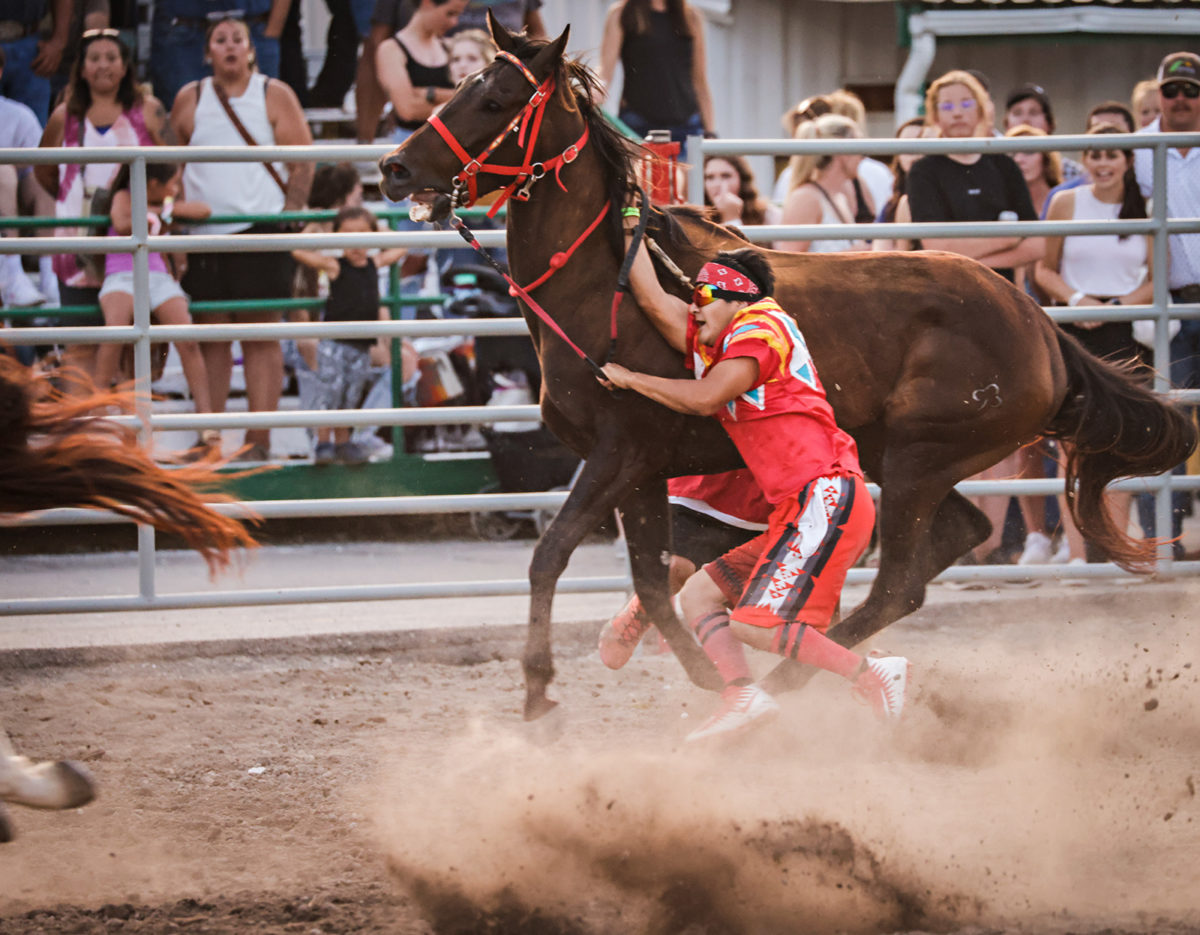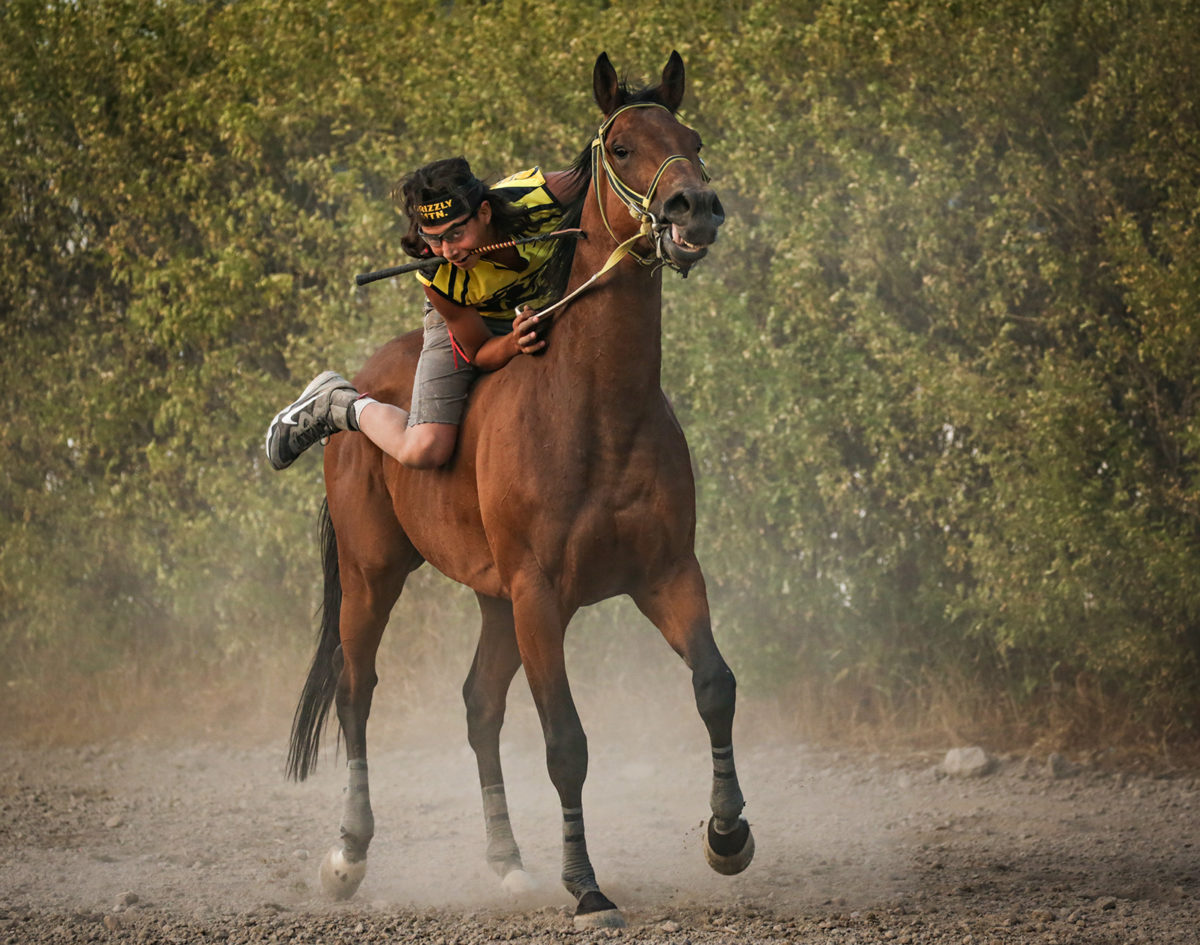In Wake of Event Cancellation, Blackfeet Relay Racers Lament Loss of Cultural and Competitive Summer Centerpiece
Budget constraints resulting from failing infrastructure at the Flathead County Fairgrounds forced organizers to cancel the Indian Relay Races this year, bringing disappointment to Blackfeet Nation teams and spectators
By Maggie Dresser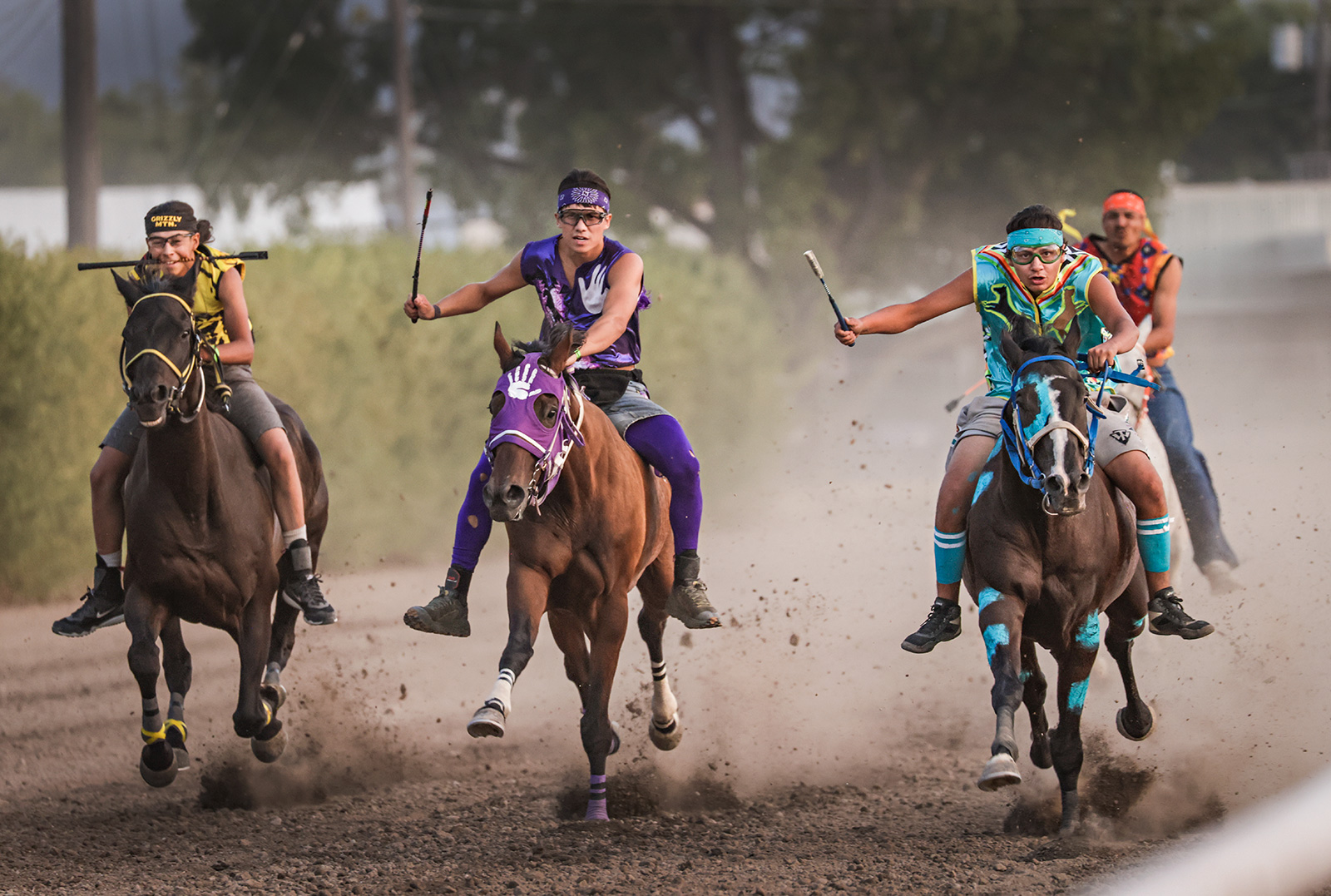
When Blackfeet tribal member Hardee Skunkcap started competing in Indian Relay Races – a bareback horse race involving a four-person team – he was 14 years old, and the sport was just beginning to gain popularity in the 1980s.
Skunkcap raced in the circuit for the next 15 years, traveling from Browning on the Blackfeet Indian Reservation across Montana, Wyoming, and Idaho. He’s won races at the Eastern Idaho State Fair, races in eastern Wyoming, at the Shoshone-Bannack Indian Festival in Idaho, and he’s a two-time world champion. He’s also won the Indian Relay at the Northwest Montana Fair and Rodeo 12 times – the same race his father LeRoy Skunkcap started with other tribal members in 1981.
After working with Bob Cartwright, who was the fair manager at the time it launched, organizers added the relay races to the roster of traditional flat track races, and they were eventually held during the rodeo.
But the Indian Relay Races won’t return this year at the Northwest Montana Fair and Rodeo after grandstand infrastructure upgrade delays forced Flathead County Fairgrounds Manager Sam Nunnally to cancel the races.
Without the ticket sales for the 1,200 empty seats in the north bleachers, which will not be occupied as they undergo repairs, Nunnally said the budget couldn’t support the relay races, an event that brings in close to 20 relay teams and costs $45,000 to put on.
“That impacts the available money we have for it, and it was a challenge,” Nunnally said. “We didn’t want to get to this point. We’ve had a long history of culture with the tribe and everyone coming to the relay races but logistically, it wasn’t lining up.”
Skunkcap said both the relay teams and spectators from the Blackfeet Nation are disappointed about the lack of representation this year. He described the race as the “last hurrah” before kids go back to school, and said its popularity draws hundreds of audience members from across the region to Kalispell during the fair.
“The camaraderie and the support of the teams – there’s a big fan base,” Skunkcap said recently at the North American Indian Days in Browning. “That was the most prestigious race since the 1980s – everybody wants to win it. All these teams want to go and say they won Kalispell.”
On Aug. 4, Outriders Present is scheduled to host a “cultural benefit event for the Blackfeet Tribe” during a Tyler Childers concert at Big Mountain Ranch in Whitefish, but minimal information about the event and scant details surrounding the race have been released. Officials with Outriders told the Beacon there are 12 teams competing who were invited “based on previous accomplishments and history,” including three teams from Blackfeet Nation. The total purse is $75,000, they said.
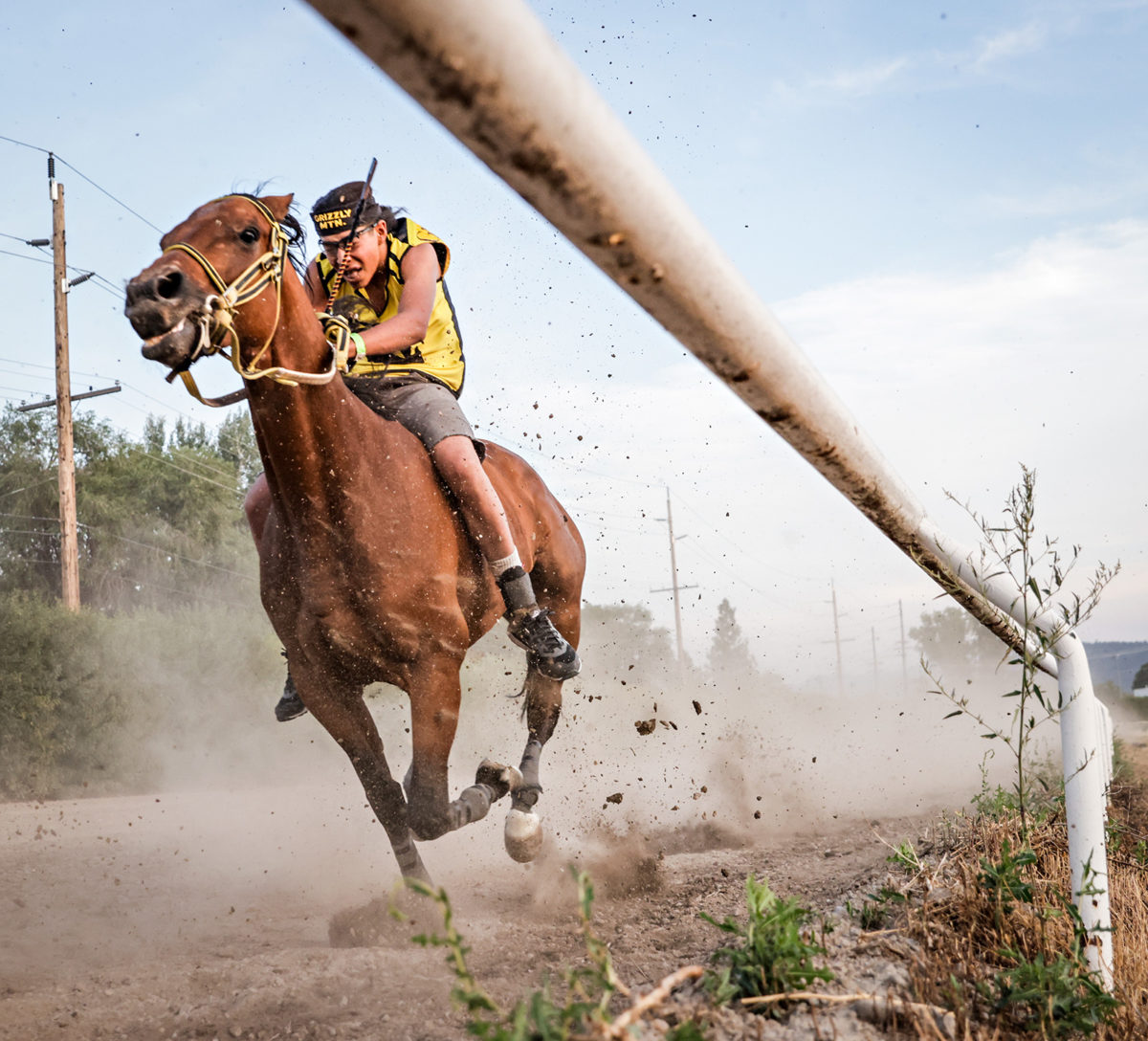
While it’s unclear when Indian Relays began, tribal members say unofficial races likely originated hundreds of years ago. But in the last several decades, Skunkcap said the Shoshone-Bannack Tribes in Idaho are responsible for the sport’s growth as they acquired more thoroughbred horses.
Unlike traditional horse racing, which involves one horse and a jockey on the track, Indian Relay teams include four people, three horses and no saddle. The rider takes three laps around the racetrack, swiftly switching to a new horse at the beginning of each lap – riding a total of three horses in three heats. The two “holders” wait for the rider to finish a lap, holding the next horse on deck while keeping the animal calm and ready to race. The “mugger” catches the incoming horse to allow the rider to dismount and leap onto the next horse.
Skunkcap says the Indian Relays are growing in popularity among spectators as purse money continues to increase across the region, with big races at Canterbury Park in Minnesota, Emerald Downs in Washington, and an expanding circuit in Canada; most prizes total at least $20,000 spread out among the winners. Last year at the Northwest Montana Fair, the purse prize was $16,000 and a horse trailer sponsorship, according to Nunnally.
“It’s a big sport – people love to see it,” Skunkcap said. “I’ve been getting calls all the way from Michigan and New York. It was on that show ‘Yellowstone,’ and I think a lot of people have seen it on there.”
The race at the Northwest Montana Fair eventually became the LeRoy Skunkcap Memorial Championship Race following the founder’s death in 2018. Skunkcap said Blackfeet teams are always motivated to race at the Flathead County Fairgrounds, which accommodates 6,200 seats in the grandstands compared to the relays held at Stampede Park in Browning during the North American Indian Days every July.
“The excitement, feeling the intensity of the crowd – it’s like the home show to us,” Martin Little Plume said. “You get big crowds there.”
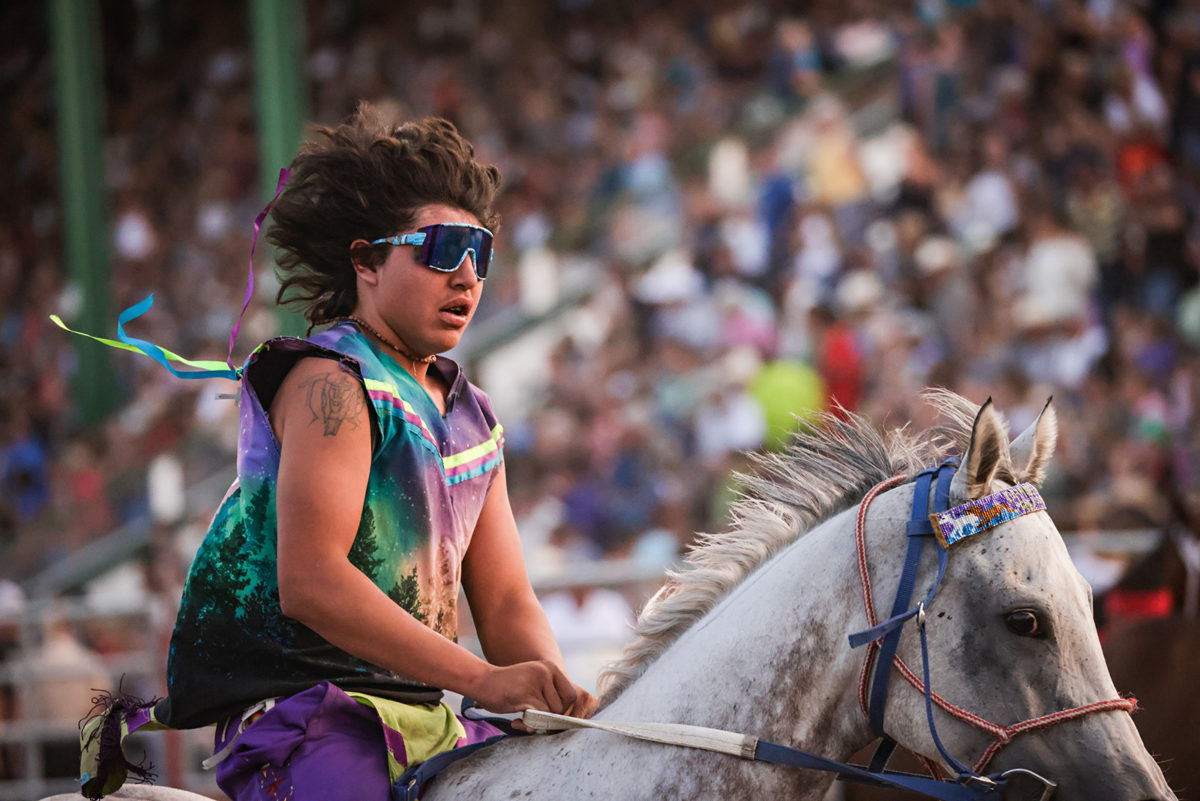
Little Plume, of the Blackfeet Nation, has been attending the Indian Relays at the Northwest Montana Fair since the 1980s, and he’s been competing every year since 2010. He’s now the owner and trainer for the Starr School relay team. His 14-year-old son Tahj is in the middle of his first full year as the team’s rider while his daughter participates on an all-ladies team.
In addition to the adrenaline and camaraderie of the relays, Little Plume emphasizes how the races give Blackfeet youth something to strive for as they carry on their tribe’s tradition.
“It’s a savior,” Little Plume said. “It’s a better thing to do – I’m kind of a rowdy guy. When I started having kids, [relay races helped] keep my family together to show them positive things in life. Down the road if they get into trouble, they can look back on these good times. It just straightens them up and stuff and they get to compete against other tribes – this is the last of our warfare.”
Kendall Old Horn of Crow Agency started riding in 1978 when he was 12 years old, traveling across the country to compete. Now in his 44th year immersed in the Indian Relays, he’s the holder for the Red Bone relay team.
Not only has Old Horn been drawn to the competition and the fellowship of the relays over the last four decades, but the therapeutic nature of horses has helped him navigate life’s challenges.
“No matter how you feel – whether you’re having a good day, a bad day, a sad day – these horses are right there with you,” Old Horn said. “They don’t complain. They put you in a different direction. They put their head up against you – they’re just there for you. It’s always good to be around horses.”
At 59 years old, Old Horn doesn’t ride much anymore, but his 17-year-old son, Hudson, is now in his second year as the team’s rider, competing at the North American Indian Days.
In addition to the therapeutic qualities of horses, Hudson Old Horn is also drawn to the adrenaline and the mental clarity the relays bring.
“It’s really just no feelings,” Hudson Old Horn said. “You have no feelings when you’re out there – it’s fast going, no worries.”
Tyrell Buckskin of the Shoshone-Bannack Tribes started riding with his grandpa when he was young, and he’s been competing in the Indian Relays since 2008. Now, he’s the part owner of the Beegup relay team out of Fort Hall, Idaho, and he’s had his share of injuries over the years, which usually involve getting run over.
“I’ve been run over a few times, but it doesn’t stop you from getting out there,” Buckskin said.
“It’s the thrill of it,” he added.
